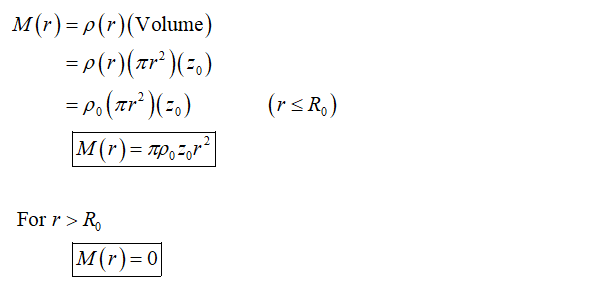The most mass of our Milky Way is contained in an inner region close to the core with radius Ro- Because the mass outside this inner region is almost constant, the density distribution can be written as following (assume a flat Milky Way with height z0): Po. rs Ro 0, r> Ro plr) = (a) Derive an expression for the mass M(r) enclosed within the radius r. (b) Derive the expected rotational velocity of the Milky Way v(r) at a radius r. (c) Astronomical observations indicate that the rotational velocity follows a different behaviour: Vida (r) = VGapoz0Ro 5/2 1+etr/&, Draw the expected and observed rotational velocity into the plot below:
The most mass of our Milky Way is contained in an inner region close to the core with radius Ro- Because the mass outside this inner region is almost constant, the density distribution can be written as following (assume a flat Milky Way with height z0): Po. rs Ro 0, r> Ro plr) = (a) Derive an expression for the mass M(r) enclosed within the radius r. (b) Derive the expected rotational velocity of the Milky Way v(r) at a radius r. (c) Astronomical observations indicate that the rotational velocity follows a different behaviour: Vida (r) = VGapoz0Ro 5/2 1+etr/&, Draw the expected and observed rotational velocity into the plot below:
Related questions
Question
Urgent

Transcribed Image Text:The most mass of our Milky Way is contained in an inner region close to the core with radius Ro-
Because the mass outside this inner region is almost constant, the density distribution can be
written as following (assume a flat Milky Way with height z0):
Po. rs Ro
0, r> Ro
plr) =
(a) Derive an expression for the mass M(r) enclosed within the radius r.
(b) Derive the expected rotational velocity of the Milky Way v(r) at a radius r.
(c) Astronomical observations indicate that the rotational velocity follows a different behaviour:
Vida (r) = VGapoz0Ro
5/2
1+etr/&,
Draw the expected and observed rotational velocity into the plot below:
Expert Solution
Step 1
Hello. Since your question has multiple sub-parts, we will solve the first three sub-parts for you. If you want remaining sub-parts to be solved, then please resubmit the whole question and specify those sub-parts you want us to solve.
Step 2
Given the density and height of Milky Way.
(a)
The expression for the mass M(r) enclosed within radius r be calculated as,

Step by step
Solved in 4 steps with 3 images
